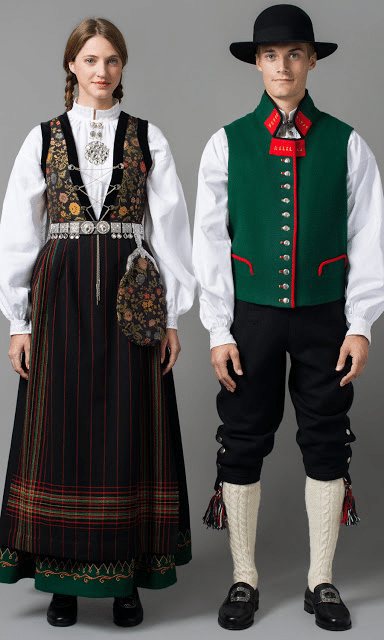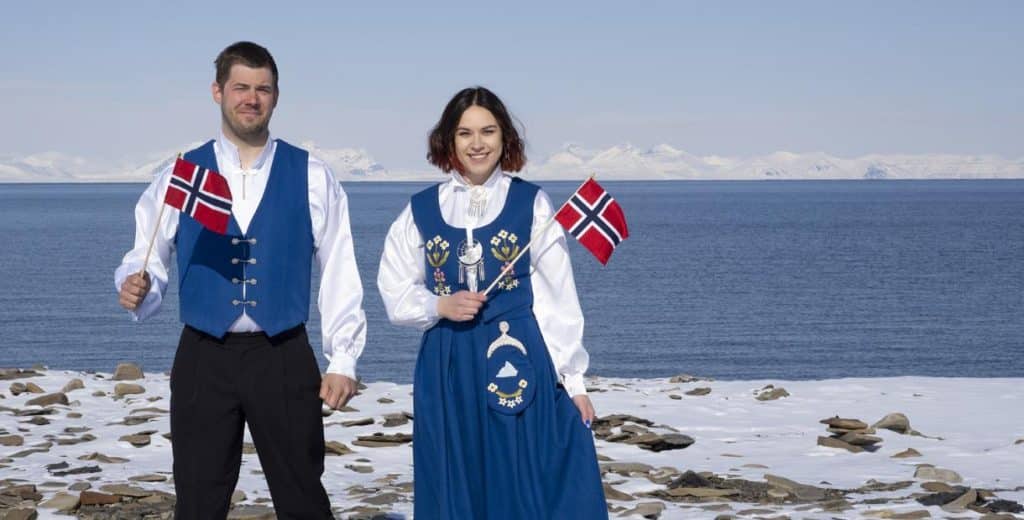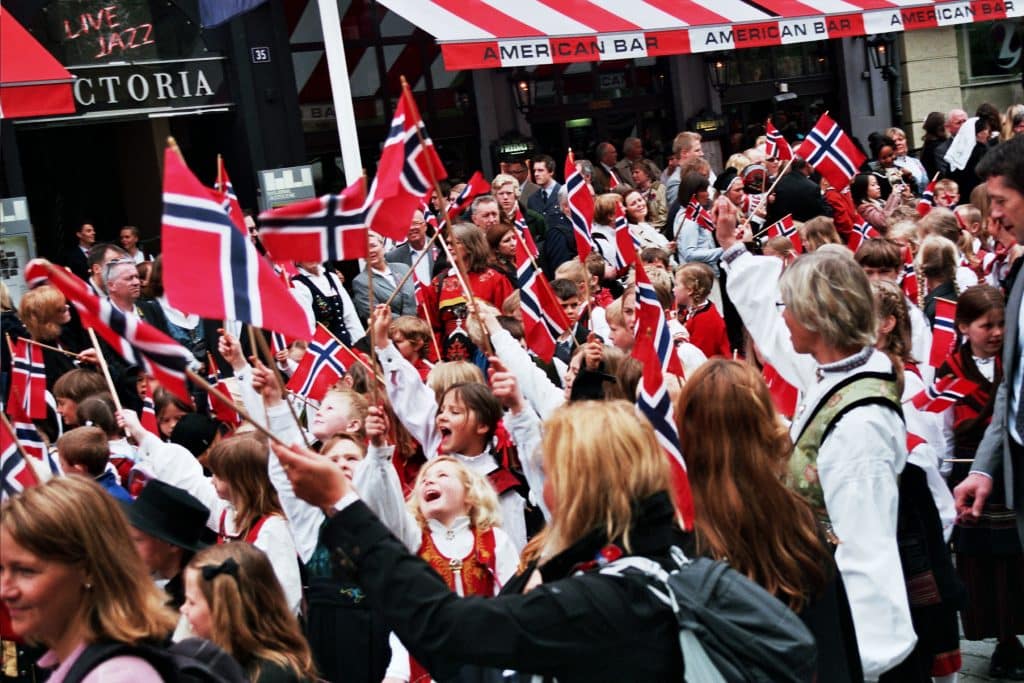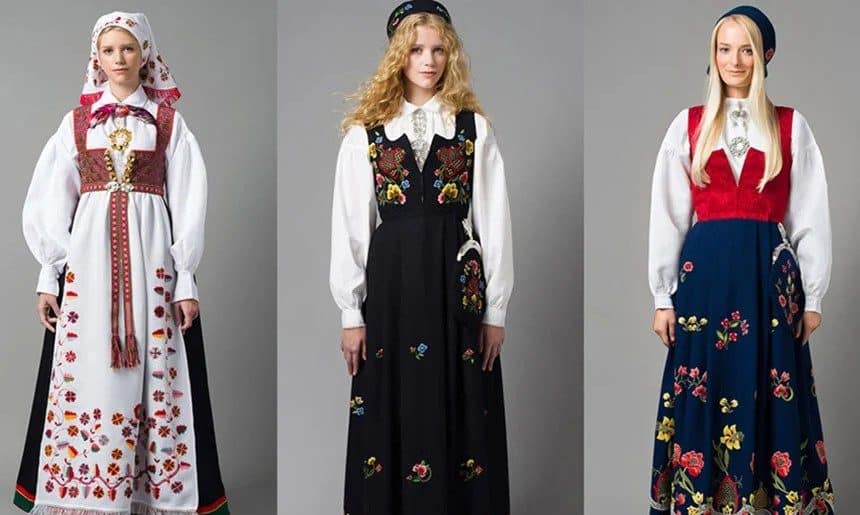Imagine you are a Norwegian girl in the late 1800s. Today is your older sister’s wedding, and she is wearing a beautiful dress with dark red fabric and embroidered flowers.
You want to wear the dress as well. To your surprise, you get to wear it like all the girls and boys invited to her wedding. And it feels like you are experiencing hundreds of years of Norwegian history, all in one single dress.
This dress is known as the Bunad or Bunader. Bunads are the traditional dress of Norway. Despite the assumptions that there are only Bunads for girls, boys also have their own version of the Bunad.

The Tradition of Bunads started in the early 1800s when Norway and Sweden formed a political union. Sweden already adopted their traditional dresses. However, the Norwegians didn’t, and they had to find their cultural identity.
Richer Norwegians researched their cultural heritage and got inspired by the Scandinavian art of Rosemalig (which means embroidering flowers onto clothes) and Woodworking, which dates back to the Viking Age.
Also, richer Norwegians got inspiration from historical Norwegian farmers. Even though richer people made the Bunads, poorer people wore them more often.
Today, Bunads are a combination of modern fashion and ruralwear, and almost all Norwegians own one, regardless of economic status.
Almost every Mayor Norwegian city/state has its own Bunad. Even Svalbard, which is a set of tiny, self-governing Artic Islands has its own Bunad designs.
The Svalbard Bunad has reference to its glaciers and mining industry. Not bad for some islands with fewer than 3,000 people.

There are 450 Bunad Variations for boys and Girls across Norway, including the Kofte (also known as Gåhkti), which is used by the Sámi People in Northern Norway.
Today, Bunads are worn on special occasions. Weddings, minor graduations (like Preschool and Elementary graduations.
I will do an article on Scandinavian high school and college graduation traditions), Birthdays and funerals are also sometimes where you have to wear a Bunad.
National and community holidays, like 17 Mai in Norway and October 9th in the USA (Scandinavian-American Heritage Day), are also days where you can wear the Bunad. About 70% of women and 20% of men own a Bunad in Norway.

When wearing a Bunad, rules follow. Unlike a lot of traditional dresses around the word, anybody, regardless of cultural heritage, can wear a Bunad as long as they have a connection to Norway,
For example. I am Venezuelan, and I own and sometimes wear a Bunad. In some areas, buying a Bunad off Non-Government websites can be considered illegal due to the hard work and copyright laws.
Some places require you to have documented ancestry of that place to wear the Bunad.
Hope you enjoy this essay. It took me about 3 to 4 hours to write and research.
Thanks for rating!







